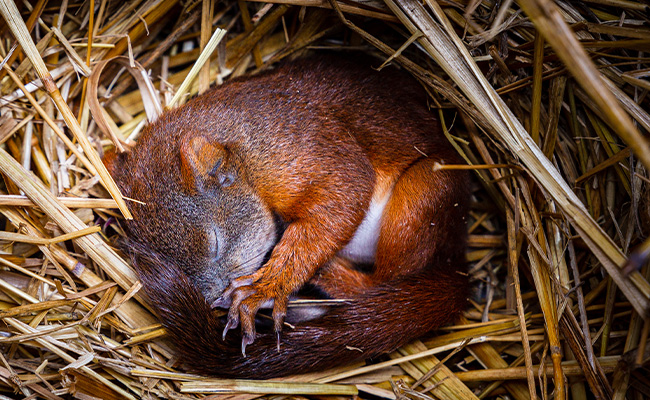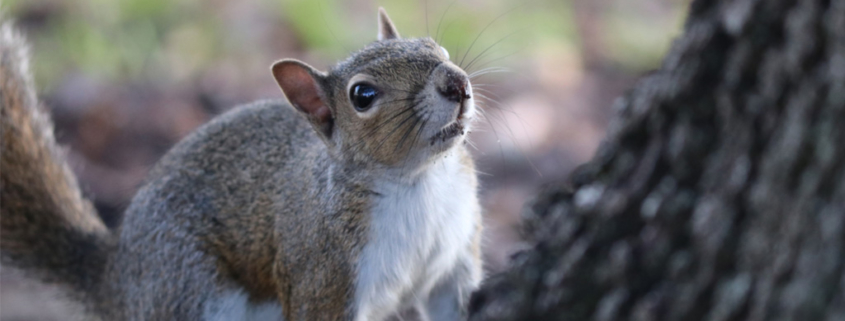How to Get Rid of Squirrels in Your Attic
Squirrels, while a delight to see roaming the trees in the wild, should do just that — stay in the wild. Squirrels in your home, specifically in your attic, can cause serious damage to your property. This damage primarily includes biting electrical wiring, insulation, and boards.
To preserve the integrity of your home, it’s important to get rid of squirrels in your attic as soon as you identify them. In this article, we’ll cover how you can tell if there are squirrels in the attic, how squirrels get in the attic, what to do if you discover them there, and how to prevent them from returning (hint: it’s best left to the professionals like those at Pest Pros).
How to Tell if There Are Squirrels in Your Attic
Hearing scratching, scurrying, or chewing sounds coming from the attic? It’s likely squirrels! A few signs of squirrel infestation in your attic include the sounds mentioned before, as well as teeth marks in the wood, air vent damage, or chewed electrical wires. Squirrels will chew through anything to find warmth and shelter, and that includes all entryways to your attic and anything that may get in their way.
Additionally, you may notice squirrel footprints (distinguishable by their 4-toed front paws and 5-toed back paws). Foul odors coming from the vents may also be a sign of squirrel urine, or, even worse, dead and decaying squirrels. The potent odors are certainly unpleasant, and a sign of squirrels in the attic.
If you dare venture into the attic, you may also find nests, squirrel droppings, and, of course, acorns. Squirrels will use insulation to build their nests, so any disturbed, ruffled, or destroyed insulation may be a sign. Scattered droppings surrounding the nesting area are also an indicator, as well as dangerous and bacteria-ridden. You may also see deposits of acorns, stored away for winter months, a sure sign of squirrels.

How Squirrels Get in the Attic
There are several ways a squirrel can enter your attic, a space where they are likely to mate, build dens, or hide from cooling weather. The following are the most common ways a squirrel can enter your attic:
- Roof Vents & Edges: When the weather cools off, the warm air coming from roof vents is a siren call to squirrels looking for a cozy space to nest. With sharp teeth, they can easily chew through the plastic and aluminum vent covers. For the roof edge, an accumulation of water and snow tends to degrade the material faster than other parts of the roof, making it easier for squirrels to chew through.
- Gable & Wall Vents: Gable vents are designed to circulate air through the attic, and their composition of wood, plastic, or aluminum is no match for squirrels seeking shelter. From there, they are able to find their way up into the attic. Wall vents are often paired with an exhaust on the exterior of the home, resembling a tree cavity in which squirrels can nest. This creates unsanitary conditions and fire hazards.
- Chimneys: Uncapped chimneys are an unrivaled invitation for squirrels. They may be able to come and go from the chimney into your attic, allowing them to create cozy nests in your home.
What to Do if There Are Squirrels in the Attic
Surely, above all else, you’re curious about how to remove squirrels from the attic. While it’s best left to the professionals, there are a few things that you, as a homeowner, can do when there are squirrels in the attic.
- Locate the squirrel nest: Materials like cardboard, leaves, and insulation are all signs of a squirrel nest in the attic. There may be baby squirrels present between February and May, or August through October. If that is the case, it’s recommended that you wait a few weeks until they are old enough to leave their mother to remove them.
- Seal attic openings: As mentioned above, there are several ways that squirrels can enter your attic through the roof and vents. They are able to fit through small entry points, so it’s important to seal them off using wire and caulking. However, to avoid dead squirrels in the attic, leave one entry point open so the squirrels can leave.
- Trap squirrels using a one-way cage door: To remove the squirrels, you can trap them by installing a one-way cage door outside the remaining open entry point. This way, you can trap the squirrels as they leave, relocate them, and seal that entry point. However, it’s important to check your local laws before trapping them, because it is illegal in certain states to trap and relocate nuisance wildlife.
- Call the professionals: The best thing you can do to remove squirrels from the attic is to call a professional pest control company. Companies like Pest Pros have the tools to safely and effectively remove squirrels from the attic. Our staff is trained to remove pests and prevent them from coming back.


How to Prevent Squirrels from Returning
Removing squirrels from the attic is only the first step. Next is to ensure that they won’t return again. To prevent squirrels from making your home their own, it can be helpful to trim trees near your roofline to lessen the chance that the squirrels can climb up and onto your roof. You can also use a plastic owl to scare the squirrels (just make sure to move it periodically so it’s effective!). Additionally, a taste repellant composed of garlic, water, and vinegar is a natural and effective way to keep squirrels away. Finally, a motion-activated sprinkler system will spray animals (all pests, not just squirrels) any time they come close to your yard.
Call Pest Pros for Squirrel Infestations
With locations in Washington and Oregon, Pest Pros is the regional expert in pest control services. We understand common residential pest issues in the region, know what to look for, and can offer thorough, accurate explanations and recommendations as a result. If you’re interested in scheduling Pest Pros services check out the areas we serve and contact us by calling us or submitting the form below. We look forward to working with you!



